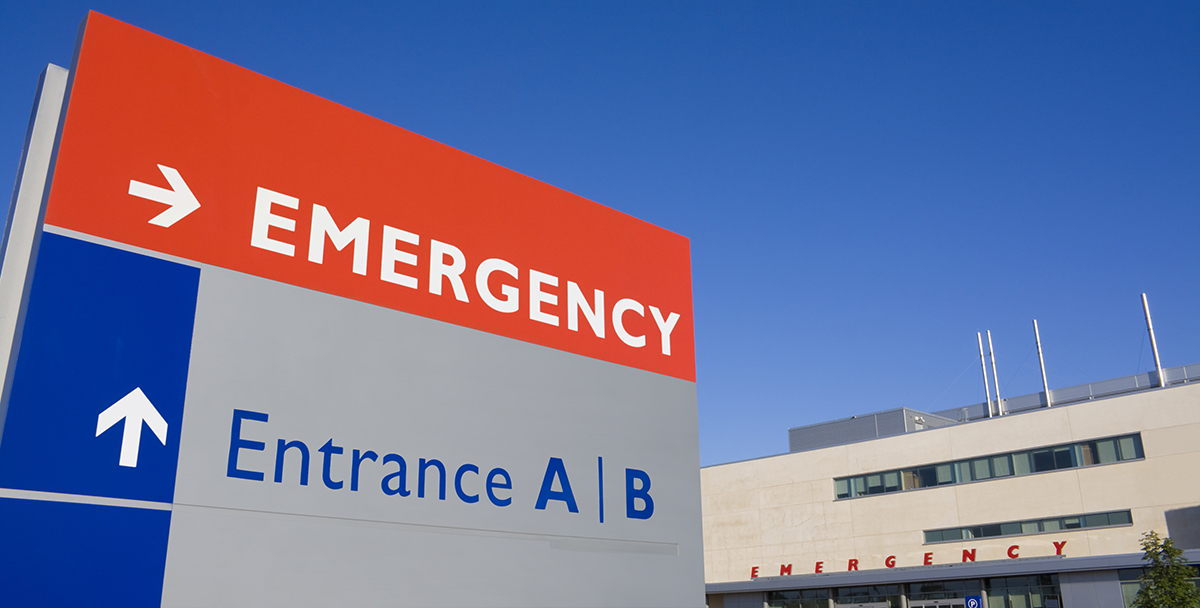Author Archive
The problem is all too familiar: Hospitals that rely on community surgeons for trauma and acute care surgery coverage can be challenged by the difficulties of delivering timely, around-the-clock emergency surgical care. In addition to the usual coverage issues, at the core there is something so basic to success you’ll even find it on every high school playing field—teamwork. Lack of it can spell serious trouble and prove costly.
Granted, emergencies demand quick action. But think about it: When a group of independent surgeons and in-house clinicians are assembled in the middle of the night, they often are not practiced at pulling together as a team. Even with their skills and experience, community surgeons can bring with them the protocols, policies and procedures implemented at their own practices. Other members of the surgical team may not know what to expect during complex procedures, and communication can be poor once the surgeon has left the premises.
The result can be patient complications and procedural issues. Handoffs may be confusing due to incomplete or inconsistent record-keeping, impacting follow-up care. This has major implications for patient safety, length of stay, patient satisfaction, staff morale and, of course, reimbursements.
Enlisting the surgical support to reliably care for emergency patients 24/7/365 means access to a surgical team with leadership, accountability and standardized policies and procedures that support the same quality of care that patients receive elsewhere in the hospital.
This begins by building a Culture of Yes around processes, procedures and a shared set of care team expectations and clear responsibilities throughout each patient’s hospital stay. It’s a culture that seeks clinical context for decision-making, avoids gaps in care and supports care continuity. It requires standard protocols to be followed by individual team members during each stage of an emergency surgical intervention to ensure safety and efficiency. Ultimately, this approach will boost provider confidence and morale because each team member has clearly defined responsibilities and goals that promote smooth integrated workflow.
Ahh…but that’s a tall order when the surgeons who lead the patient care team are themselves individualists. A modern answer is to rely on surgeons who are committed teammates—surgicalists. Perhaps best understood as surgical hospitalists, surgicalists are board-certified or -eligible surgeons who lead contracted surgical teams. They provide dedicated, on-duty emergency and trauma surgery coverage 24/7/365. Given that, they readily adopt and contribute to the hospital’s standardized surgical policies and procedures and align with the overall hospital culture.
SAMGI has been setting the standard in surgicalist recruiting, training and management for over 25 years. Our programs have demonstrated time and time again the value of managed surgical teams with clear procedural guidelines based on a hospital’s individual needs. Programs built around a Culture of Yes generate reliable, controlled data that guide a facility through continuous process improvement and creation of evidence-based Best Practice guidelines. Our hand-picked, highly skilled surgicalist teams have helped hospitals nationwide leverage this growing paradigm to provide enhanced surgical care and deliver on their mission to serve their community, while driving tangible, substantial ROIs. Click here to learn more about surgicalists and creating a dedicated emergency surgical team.
Yes, Si, Oui, Ja, Da. Whatever the language, it’s universal. You can’t deny the power and positivity of “Yes”.
During these uncertain economic times, this is particularly important. When a facility says Yes to a broad spectrum of patients, it’s delivering on its mission of providing care to the local community. This, in turn, boosts access to care, quality measures, reputation, staff satisfaction, patient base, CMI and financial success. In short, it elevates the hospital’s stature in almost every way.
However, for many hospitals, providing broad-based emergency surgery care can be a major stumbling block to this highly desirable Culture of Yes, turning it into a dreaded Culture of No and setting off a negative cascade that ultimately affects the hospital’s stature on every measure.
It’s a fact that a significant number of a hospital’s inpatients—as many as 70%—are admitted through the Emergency Department. Statistically speaking, at least 10 percent—and often many more—of these patients will require emergency surgery and will ultimately enter the OR. If your hospital is falling below that figure, you have a problem. You are either turning ED patients away, patients are walking to seek care in another facility or, worse yet, your LEMSA won’t even consider your facility.
So how does a hospital adopt a Culture of Yes for trauma and acute care surgery patients? The obvious answer is that it must have adequate and reliable surgical talent to support this patient population. But often, the way to accomplish this is anything but obvious—or easy.
Many hospitals continue to rely on community private practice surgeons for coverage and often have a difficult time recruiting talent. Performing midnight surgeries is not in line with today’s desired positive work-life balance. Moreover, today’s surgeons are often specialized, making the versatile general surgeon—the choice for emergency procedures—a relic of the past.
When a hospital is, in fact, able to establish relationships with local surgeons, frequently wait times for visits are long, resulting in patient dissatisfaction and potentially greater complications and patient decline.
Alternatively, hospitals may attempt to recruit in-house surgical staff themselves. However, this is a complex process. Competition to attract the diminishing supply of surgeons who fit the emergency surgery bill is strong. Without a finger on the pulse of the marketplace, knowing how to reach and attract appropriate candidates in an ever-changing landscape can be difficult at best.
A better choice may be implementing a surgicalist aka surgical hospitalist program. Surgicalists are board-certified surgeons who lead a surgical team to deliver full-time ED, inpatient and outpatient coverage and ensure the availability of quality care 24/7/365. Typically they are general surgeons or are drawn from the emerging specialty of acute care surgery. Without private practice cases competing for their time, surgicalists can focus on ED and acute care demands on a predictable set schedule.
A surgicalist, for example, might work every day for two weeks on a pre-determined schedule, then have two weeks off to recharge. Existing private practice surgeons often continue to assist with on-call needs as desired but with a much more manageable schedule.
SAMGI has been helping hospitals implement surgicalist programs for over 25 years and continues to set the standard for surgicalist performance. They have had numerous hospitals of every size nationwide leverage the surgicalist paradigm to create a Culture of Yes. If you find your hospital is saying no too often, isn’t it time you talked to SAMGI? With surgicalists available to meet the full range and volume of emergency surgeries, more procedures are performed, outcomes improve, financial results grow and a hospital takes on new stature. Who can say no to a Culture of Yes? Click here to learn more about building a Culture of Yes and taking your facility to the next level.
Higher revenue is knocking on your ED door! Open up, and let it in.
Facts show that a significant number of ED patients in every hospital require surgery. If you’re unable to receive them or they’re sent by your LEMSA to another facility, you’re missing out on readily accessible income as well as your mission to serve the community.
Increasing your hospital’s surgical caseload not only directly adds dollars—and significant ROI when properly managed—but also launches a progression towards improved financial performance that resounds hospital-wide.
The sad fact is that in today’s ED many hospitals are forced to turn away patients with emergency surgical needs simply because they do not have the medical talent to provide appropriate care. While no hospital welcomes this, many believe they have no choice. Others assume that the cost of filling the staffing void will not justify the income generated, sending their finances in a downward spiral. They’re wrong.
Nothing could be further from the truth. Many hospitals have found that a well-managed surgicalist (think surgical hospitalist) program supports growth and delivers a host of other benefits experienced throughout the hospital.
For the uninitiated, surgicalists are board-certified or -eligible surgeons who lead on-duty contracted surgical teams, ensuring that quality care is available when needed.
These surgeons enable hospitals to welcome emergency and acute care surgical patients 24/7/365, opening the door to extending care through convalescence and follow-up, adding to hospital revenue.
Moreover, with a surgicalist program hospitals derive added financial benefits because they typically also take on more complex cases, boosting their CMI and adding to reimbursements. So too, the program can help to turn around the negative reputation that typically characterizes facilities known for long ED wait times and for turning patients away.
In turn, this enhanced reputation will typically attract more patients, likewise boosting income. This may enable hospitals to attract higher quality and more specialized staff as well as create a positive can-do, “Yes” attitude among existing staff. All this contributes to elevated performance on quality measures, further enhancing reputation and financial results.
In short, success leads to success once you establish a Culture of Yes.
Lynette A. Scherer, MD, FACS, CEO of SAMGI, which has specialized in building and managing surgicalist programs for over 25 years, notes that a surgicalist program often does represent a significant financial investment, but the ROI for a well-managed program clearly justifies the dollars spent by elevating a hospital’s profitability and performance to a whole new level.
SAMGI has been a leader in surgicalist programs and today continues to set the standard for surgicalist performance. Their programs have helped hospitals of every size nationwide leverage the surgicalist paradigm to deliver enhanced surgical care, deliver on their mission of serving their communities and boost profits by building a Culture of Yes. If your hospital is turning away surgical patients due to unmet staffing needs, say Yes to a conversation with SAMGI today. Click here to find out how a growing number of forward-thinking hospitals are leveraging increased emergency surgeries to create a culture that says Yes to financial success.
Years ago, private-practice surgeons from a hospital’s medical staff rotated call to handle acute and emergency surgeries. While community surgeons were typically competent and dedicated, they were also typically distracted and weary from the demands of their own private practice. Providing call also took a heavy impact on their personal/family life.
Today, a growing number of surgeons have simply refused to do it causing recruiting and retention issues for hospitals still trying to use this model. In the absence of timely coverage, surgeries are either being delayed when time is critical to optimizing clinical outcomes or, more often, local emergency service authorities route critically ill or injured patients past those hospitals’ ED doors to a nearby competing facility that provides immediate acute/trauma surgical care. That still means an avoidable delay in care in transit, and lost revenue for the bypassed local hospital. Many have reduced their services or even closed their doors as a result.
As a leader of a local hospital, you must ask yourself: Are we holding on to an outdated delivery model that continues to fail to meet the expectations of our community, our board and our donors/investors?
There is a better way for hospitals of nearly any size to offer timely, high-quality emergency surgery procedures—a way that’s being widely embraced throughout the industry as a means to deliver these life-saving and revenue-generating services closer to home.
The answer: Skilled surgicalists
On-duty — not on-call — surgicalists (board-certified or -eligible surgeons and other healthcare providers skilled in delivering in-house trauma, acute care, orthopedic, neurosurgery, urology, GI and general surgery services) fill the gap between community physicians and the needs of local patients and hospitals. These specialists undergo intensive training in delivering evidence-based, best-practice surgical care in an emergency/trauma environment, and their sole workplace is the hospital itself. They are accustomed to collaborating with hospital departments and teams to optimize care coordination, helping avoid extended length of stay, unnecessary complications, readmissions and a less-than-optimal level of care, starting at the initial ED intake through the eventual transition to post-discharge care.
Implementing a surgicalist program for acute and trauma-level surgeries has proven to improve a hospital’s case mix index (CMI) and drive revenue generation in ancillary services. It also provides a critical “halo effect” for the hospital’s image. That positive impression as a modern, high-quality care institution translates to increased patient volumes for other services, and helps the organization show its ongoing commitment to a mission of community service.
The proven SAMGI difference
For two decades, SAMGI (Surgical Affiliates Management Group, Inc.) has helped client hospitals deliver 24/7/365 on-duty coverage for acute and trauma surgeries. Led by dedicated medical directors, SAMGI surigicalist teams provide a turnkey acute-care and trauma surgery program that helps increase operational efficiency and ensures seamless integration with other hospital departments, including hospitalist programs. SAMGI surgiclalist programs provide standardized care grounded in evidence-based best practices that help ensure consistent high-quality care and standard approaches to clinical scenarios that reduce unnecessary tests or delays in care while optimizing clinical, financial and satisfaction outcomes.
Click here to learn more about SAMGI and discover the kind of ROI that SAMGI can deliver by bringing its exceptional acute and trauma-level surgical expertise to your organization.
Hours-long waiting times in an understaffed hospital Emergency Department affects not only patients’ clinical outcomes, but also patient satisfaction and your community reputation. What’s more, poor follow-up can make this situation even worse, causing gaps in care that lead to avoidable medical errors that have significant financial implications and that impede your facility’s ability to grow.
So, ask yourself…”Can I count on my on-call general surgeons when minutes count? Does my hospital have the staffing model and processes to optimize those essential aspects of delivering effective, efficient emergency care?” If there’s a scintilla of doubt in your answer, your trauma and acute-care surgery program may need emergency care.
What are you doing to stop the hemorrhaging of patients, physicians, clinical staff and revenue as your ED volumes and reputation decline? Are you:
- Still trying to make do with the old-style coverage by rotating members of your community surgeons for on-call coverage?
- Forced to turn away emergency surgical patients due to lack of coverage? Or has your LEMSA already taken care of that…diverting patients because they know you’re ill-equipped to deal with their trauma patients in a timely fashion?
- Trying and failing to recruit and retain ED surgical specialists in your remote or underserved community because they don’t want to work and live there as a suitable career and family move?
- Still struggling with efficient care coordination and best-practice processes across ED surgeons and the rest of your hospital-wide care team? Handoffs between team members are where the greatest and most potentially deadly avoidable medical errors can occur.
Unfortunately, the versatile, broadly experienced general surgeons needed to provide timely, optimal emergency care are flocking to more-lucrative specializations and locations. Many simply don’t want the erratic schedules of ED coverage, especially as an “add-on” responsibility on top of their own private practice.
And frankly, community or locum tenens surgeons who rotate hospital shifts are not, by definition, a coordinated team. They lack the leadership and group mindset to create and follow shared protocols and procedures proven to save lives. This causes inconsistencies and AMEs that can lead to less-than-optimal clinical and financial outcomes, including the cost of readmissions.
Hundreds of hospitals are struggling, and even closing their doors, with the trend accelerating. Will yours be next if you don’t deal with this critical coverage issue?
The SAMGI answer: On-duty surgicalist coverage that delivers best practices
SAMGI (Surgical Affiliates Management Group, Inc.) has decades of experience helping resource-constrained client hospitals provide 24/7/365 on-duty coverage for acute-care and trauma surgeries. SAMGI’s turnkey program helps increase operational efficiency and ensure seamless integration with other hospital departments, including hospitalist programs. SAMGI’s teams are always available to provide the highest level of patient care while fostering integrated processes and care coordination across the hospital.
Led by a dedicated medical director, SAMGI’s teams include board-certified surgeons and other healthcare providers skilled in delivering in-house trauma, acute care, orthopedic, neurosurgery, urology, GI and general surgery services. SAMGI programs provide standardized care grounded in evidence-based best practices that help ensure consistent high-quality care utilizing standard approaches to clinical scenarios that reduce unnecessary tests or delays in care while optimizing clinical, financial and satisfaction outcomes.
What can SAMGI do for you? Click here to learn more about SAMGI and discover the kind of ROI that SAMGI can deliver by bringing its exceptional acute and trauma-level surgical expertise to your organization.
When patients are in life-threatening situations, they and their loved ones want only the best…and you want to be the one to deliver it. But even with a highly qualified medical staff, advanced technologies and sound practices in place, will your hospital be the one chosen by your local emergency management services authority (LEMSA)?
Most people know that designated trauma centers, particularly Level I regional centers, deliver the highest level of specialized, immediate trauma care — care that’s been shown to improve clinical outcomes: lower mortality rates, lower rates of disability at discharge, and better overall outcomes for severely injured patients. That commitment also creates a “halo effect” whereby requirements that are instituted for trauma patients are available to all patients in a facility, elevating hospital-wide care.
You may believe that becoming an American College of Surgeons (ACS)-verified trauma center is just too high a bar…one that requires significant investment in resources and process improvement your team can’t deliver alone while serving current patients. It’s true that ACS trauma verification is a complex process — including staffing standards such as immediate, on-site availability of an acute and trauma-level surgical team, and implementing coordinated, best-practice processes throughout the organization that can impact virtually every clinical department. Plus, it’s an ongoing commitment; the comprehensive verification process must be repeated every three years.
But without the designation, your ED, Surgery, Radiology, Lab, inpatient units and other revenue centers are losing the opportunity to help trauma patients and contribute to your financial goals that support ongoing community service. Is that because your LEMSA is routing critically injured patients past your doors to the nearest ACS-verified trauma center? So, at a time when minutes count for treating trauma patients, non-verified hospitals can fall well short of their goal to serve the community, enhance their reputation and sustain and grow the bottom line.
SAMGI on-duty surgicalists and knowledge of the ACS trauma verification process
SAMGI (Surgical Affiliates Management Group, Inc.) provides dedicated teams of board-certified surgeons and healthcare providers for in-house trauma, acute care, orthopedic, neurosurgery, urology, GI and general surgery services for communities and hospital systems. For decades we’ve been helping client hospitals achieve and maintain American College of Surgeons-verified trauma center designation.
As a national leader in establishing high-quality trauma and acute-care surgicalist programs, SAMGI provides its clients an unequaled depth of knowledge and expertise in acquiring and maintaining ACS trauma center verification. SAMGI’s surgeon-led leadership team has extensive experience with both the ACS verification process and state-specific site reviewers, giving our clients an effective depth of leadership and proficiency during every phase of the comprehensive ACS verification process.
SAMGI’s turnkey acute-care and trauma surgery program is led by a dedicated medical director who helps increase operational efficiency and ensure seamless integration with other hospital departments, including hospitalist programs. SAMGI’s teams are on-duty 24/7/365 to provide the highest level of patient care while integrating processes across hospital departments. SAMGI programs provide standardized care grounded in evidence-based best practices that help ensure consistent high-quality care and standard approaches to clinical scenarios that reduce unnecessary tests or delays in care and optimize clinical, financial and satisfaction outcomes.
Click here to learn more about SAMGI and discover the kind of ROI SAMGI can deliver to both your ACS verification achievement and your organization.
Like too many other hospitals, you may be turning away high-revenue emergency surgical cases — to your competitors — because you can’t depend on timely, reliable coverage when minutes count. What used to be a significant contributor to your bottom line, and your reputation for service to your community, is withering away.
Local surgeons with their own elective practices used to take turns rotating on-call ED coverage. That was a less-than-perfect model that delayed care, disrupted surgeons’ work/life balance and hurt their own practice’s bottom line.
Few today are willing to still do that, and well-rounded general surgeons are already in increasingly short supply; in an article in JAMA Surgery, it’s called a “looming crisis” since fewer than half of U.S. hospitals provide emergency general surgery care due to staffing shortages and total costs. With little growth projected for the supply of surgeons this decade — combined with a growing and aging population and the retirement of many currently practicing surgeons — demand is projected to outpace supply of surgeons by 19,800 to 29,000 by 2030.
Hospital leadership often struggles with the numerous factors involved in providing an effective and efficient trauma and acute-care surgery (TACS) program. Along with the overall shortage of surgeons, many hospitals in underserved rural or depressed urban areas simply aren’t competitive enough in their markets to attract and keep skilled acute and trauma-level surgeons who are available 24/7/365. It’s also not without cost, yet it remains key to generating revenue. Plus, the hospital remains committed to delivering a level of broad, readily available healthcare to its community.
Left unresolved, this lack of an efficient and well-staffed TACS program can cause the hospital to turn away the high-revenue emergency surgical cases that can mean the difference between overall profit or loss in departments throughout the organization — not only ED but surgery, anesthesia, radiology, laboratory, surgical nursing units and more.
The cure: SAMGI on-duty surgicalists
Emergency surgical revenue growth requires qualified, reliable on-duty trauma and acute care surgical coverage. It’s that simple…and yet that difficult. But that’s exactly what SAMGI (Surgical Affiliates Management Group) provides — board-certified or -eligible surgical teams dedicated to your hospital. No locum tenens. No on-call surgeons.
We partner with hospitals to provide superior 24/7/365 always on-duty emergency surgical services that help improve patient outcomes while optimizing hospital performance, efficiency and revenues. Peer-reviewed results published in the Journal of the American College of Surgeons have demonstrated that our evidence-based, standardized care programs deliver long-term excellence in patient care and optimization of overall hospital performance by improving workflow, efficiency and patient outcomes.
Unlike locum tenens surgeons, locally based SAMGI surgicalists work on a team of surgical partners to deliver best-practice, evidence-based emergency general, orthopedic, urology, GI and neuro surgical patient care. They’re not temps or fill-ins. They’re full-time surgery teams whose sole focus is to enable emergency patients at emergency surgical staffed-challenged hospitals to undergo surgery without unnecessary delays. There’s no waiting for local surgeons or other issues requiring transfers to tertiary-care hospitals with accredited trauma services farther from home.
They can mean all the difference between the health of your patients…and your bottom line.
Click here to learn more about SMAGI and to discover the kind of ROI a SAMGI surgicalist program can deliver.
If your facility is presenting any of the following four symptoms, it’s likely your trauma and acute-care surgery (TACS) operation is on life support. Your revenue is flat-lining and need some sort of an intervention to revive it.
-
-
- Hospital leadership is struggling with ways to successfully grow revenues for your surgical program. Prognosis: A sagging bottom line that’s unsustainable.
- Your facility falls short of meeting American College of Surgeons-verified trauma center criteria that it is redirecting those patients to ACS-verified trauma centers. Prognosis: Business and revenue opportunities lost.
- You’re relying on local surgeons to provide emergency general surgical care — surgeons already busy with their own private practices. Prognosis: Stressed local physicians, care delayed, clinical outcomes potentially poorer, and business lost. Again.
- Patients are reporting dissatisfaction with overcrowded EDs, delayed procedures, disjointed follow-up and a lack of family communications. And they’re telling others. Prognosis: Bleak.
-
There’s no question the pandemic has caused a huge hit to most hospitals’ bottom line. Costs of providing care have shot up, qualified surgeons and professional staff are exhausted and in increasingly short supply, and many elective procedures are still being cancelled or postponed. As healthcare works to recover, no organization can afford to turn away badly needed and profitable business. That especially includes an efficient, effective TACS program, which typically generates critically needed revenue, contributes to high levels of organizational performance and fuels community goodwill, repeat patient, and positive name recognition.
To excel, your Emergency Department should be admitting at least 1% of total admissions as an acute care surgery case and achieve a CMI index greater than 2.09. It also should be achieving acceptable surgical patient lengths of stay, readmission, and complication rates. To do all that, it needs to deliver immediate care adhering to standardized best-practice guidelines, including exceptional post-surgical care coordination and communication across departments. Anything less will fall short of achieving your goals.
So what can you do to revive your TACS program, or take it to higher levels of performance? The first step is identifying what factors — your organization’s particular “symptoms”— are standing in the way of a return to strong financial health: a high-volume TACS cases, a CMI that’s 2.0 or greater, and shorter lengths of stay. The next step is to take action to treat them—a step where you might should consider a SAMGI surgicalist intervention.
SAMGI’s surgicalist solution
SAMGI (Surgical Affiliates Management Group) delivers a proven cure for these issues. We partner with hospitals to provide superior, evidence-based 24/7/365 always on-duty emergency surgical services that improve patient outcomes while optimizing hospital performance, efficiency and revenues. Peer-reviewed results published in the Journal of the American College of Surgeons have demonstrated that our evidence-based, standardized care programs deliver long-term excellence in patient care and optimization of overall hospital performance by improving workflow, efficiency and patient outcomes.
Unlike locum tenens surgeons, locally based SAMGI surgicalists work on a team of surgical partners to deliver best-practice, evidence-based emergency general, orthopedic, urology, GI and neurosurgical patient care. They’re not temps or fill-ins. They’re full-time surgery teams whose sole focus is to enable emergency patients at emergency surgical staffed-challenged hospitals to undergo surgery without unnecessary delays. There’s no waiting for local surgeons or other issues requiring transfers to tertiary-care hospitals with accredited trauma services farther from home.
Click here to learn more about SMAGI and to discover the kind of ROI a SAMGI surgicalist program can deliver.
Cashing in on a trifecta is a rare and major win. But, with a higher level of patient care, enhanced reputation and greater financial success, that’s what a rural hospital can achieve with a surgicalist program. And unlike at the racetrack, with SAMGI’s skill and expertise, little is left to chance.
Attracting the required team of high-caliber physicians has long been a challenge for rural hospitals. This includes surgeons in particular. The fact is that many physicians simply prefer less isolated environments.
Moreover, as surgical specialization becomes the norm, the broadly experienced general surgeon is rapidly becoming just a memory, diminishing the pool of surgeons appropriate for treating trauma and acute-care (TACS) cases. Drawing surgical talent from the local community comes with risks and potential pitfalls: lack of cohesive surgical leadership and standardized protocols and procedures, confusion at patient hand-off and possibly gaps in follow-up care. All this taxes already stretched clinical teams. This can this spell trouble. That’s a sure bet.
A Common Scenario
In America’s rural hospitals, the scenario is played out time and time again. Patients, possibly with pressing needs for immediate care, may wait hours in the emergency room for an on-call local surgeon. These surgeons are often tired and overworked, particularly if summoned in the middle of the night. If they never materialize, care is delayed as patients are transferred to hospitals in other communities far away from family and friends. Or, perhaps this trauma transfer is standard protocol. This often becomes a vicious cycle—eroding trust in local hospitals, diminishing their reputations, further hampering the ability to attract the needed surgeons and impacting the bottom line.
The Race is to the Swiftest
A surgicalist program can put rural hospitals on the same track as larger institutions in the race for success. It provides a contracted team of hand-picked board-certified or -eligible trauma and acute-care surgeons to meet a hospital’s needs to handle emergency cases 24/7/365 . Gambling on coverage with local surgeons is eliminated. SAMGI surgical teams function as part of hospital staff and the appropriate expertise is always available with highly qualified, motivated surgeons committed to a hospital’s success.
Through this model, smaller hospitals can enjoy high-caliber surgeons that they likely would not be able to recruit in-house, through traditional staffing agencies or as locum tenens. Surgeons participating in these programs enjoy an excellent work/life balance with predictable schedules. Much of the red tape surrounding private practice is eliminated, while physicians enjoy the rewards of their chosen medical field. They work with hospital leadership and function seamlessly as an integral part of the organization.
The Big Win
A SAMGI surgicalist program can mean hospitals are no longer forced to turn away complex emergency cases, their case mix index grows, and Centers for Medicare and Medicaid reimbursement increases. And with SAMGI’s intake through convalescence care model, they can provide post-op and ongoing care for their emergency patients, adding additional income. A hospital’s standing in the community and beyond increases. Recruitment of high caliber staff overall may be more successful. All this, in turn, enhances the hospital’s reputation and likely draws more patients. And of course, most important, those patients enjoy a far higher standard of care.
So, at the finish line, a surgicalist program delivers a real trifecta. Everyone’s a winner—patients, communities and hospitals. That’s what a good healthcare system is all about.








Latest posts